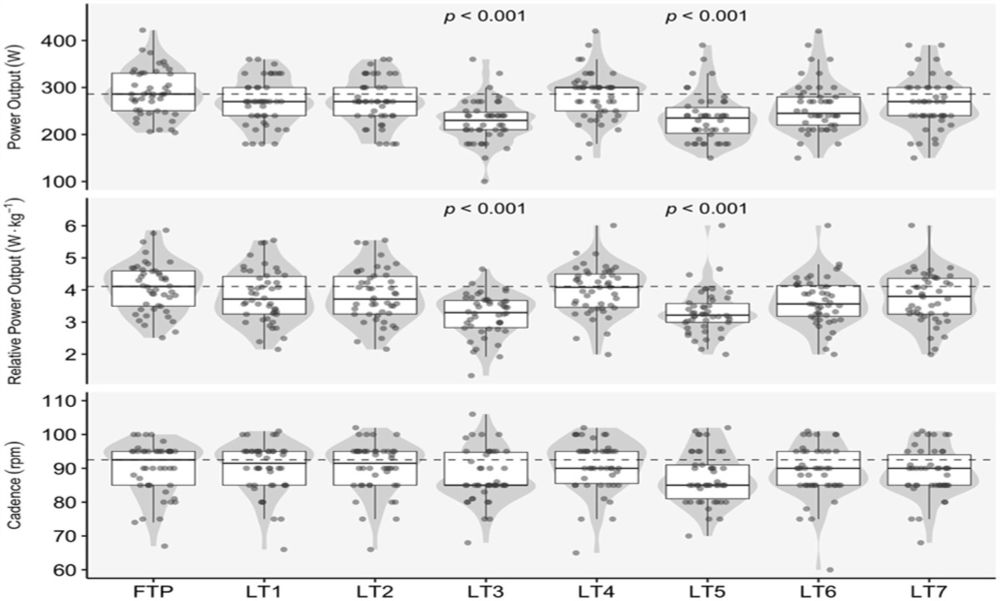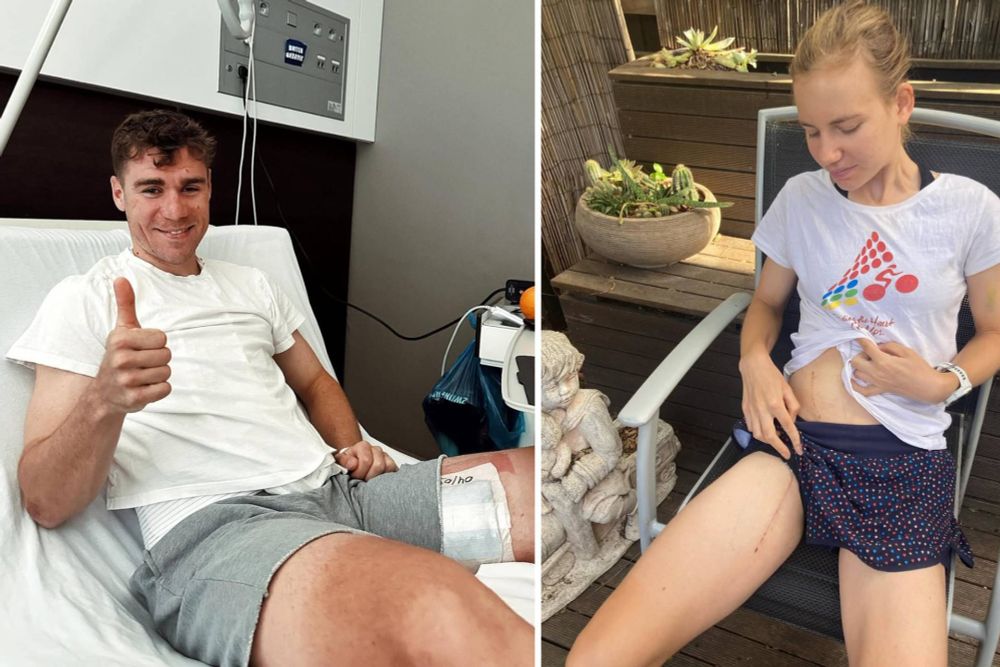You should be able to write out "Ctrl+Shift+." elsewhere and right-click paste into the shortcut editor.
I was getting the same annoyance with "Ctrl+Shift+3" appearing as "+#"
08.10.2025 04:11 — 👍 1 🔁 0 💬 1 📌 0
Thanks, you just gave me flashbacks of having the same feelings when I played it. Nostalgia with extra -algia 🥲
Very similar feeling to actually scuba diving IMO. The part about gradually getting more confident more than the part about staying on top of survival
06.10.2025 03:06 — 👍 1 🔁 0 💬 0 📌 0
Seems to be working. Looks like a better solution, thanks!
20.09.2025 04:00 — 👍 1 🔁 0 💬 0 📌 0
Oh great, thanks! Maybe this is the sign to look for a better method to preview final plot sizing than the camcorder hack 😅
19.09.2025 21:04 — 👍 0 🔁 0 💬 1 📌 0
Is it just me, or did {ggplot2} 4.0.0 S7 update break {camcorder}? 😢
#rstats #dataviz
19.09.2025 16:46 — 👍 2 🔁 0 💬 2 📌 0
Agreed. Metadata compliments data interpretation
(can we call things like effort/intention, environmental context, etc. as 'metadata'?)
16.09.2025 14:38 — 👍 1 🔁 0 💬 0 📌 0

Oh they did at least propose updated estimates by performance level in a subsequent paper
dx.doi.org/10.1055/a-20...
10.09.2025 03:25 — 👍 0 🔁 0 💬 1 📌 0
At least they used the 5-min clearing effort before the 20-min TT? 😅
10.09.2025 03:20 — 👍 0 🔁 0 💬 1 📌 0

A boxplot with individual data for FTP (functional threshold power) and LT1 (power at 2.0 mmol/L) in relative power output (W/kg) from 46 competitive male cyclists. LT1 range equals approximately 61-90% FTP, evaluating by rank order across both measures, since paired individual scores are not known. Data digitised from Sitko et al, 2022. Functional Threshold Power as an Alternative to Lactate Thresholds in Road Cycling. https://doi.org/10.1519/jsc.0000000000004070
Saw a question "what %FTP should my first threshold be at?"
How do we begin to guess? Start with a prediction interval, not a falsely precise point estimate
Data from Sitko et al 2022 helps as a starting estimate (link below 👇)
Any similar datasets? (particularly for female cyclists?)
10.09.2025 03:12 — 👍 5 🔁 0 💬 2 📌 0
aaah, so that's why every year I briefly look around at modern mobos but end up sticking with my 10 yr old Asus with onboard optical to drive my 20 yr old Logitech Z-5500s😅
05.09.2025 14:26 — 👍 1 🔁 0 💬 1 📌 0
This is really, really good 👀
24.08.2025 15:08 — 👍 9 🔁 0 💬 0 📌 0
Really interested in learning about this. Way above my pay grade though 😅
19.08.2025 19:36 — 👍 0 🔁 0 💬 1 📌 0
New paper with @drphilipskiba.bsky.social is now out: journals.humankinetics.com/view/journal...
We took a new approach to modeling the power duration curve in cyclists using functional principal component analysis.
19.08.2025 16:41 — 👍 12 🔁 5 💬 3 📌 2
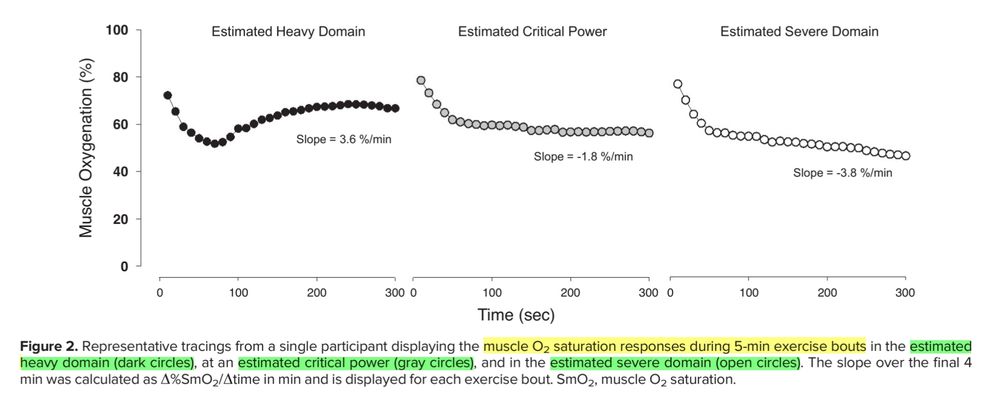
Matthews et al, 2023. Identification of Maximal Steady State Metabolic Rate by the Change in Muscle Oxygen Saturation journals.physiology.org/doi/full/10....
26.06.2025 18:00 — 👍 1 🔁 0 💬 0 📌 0
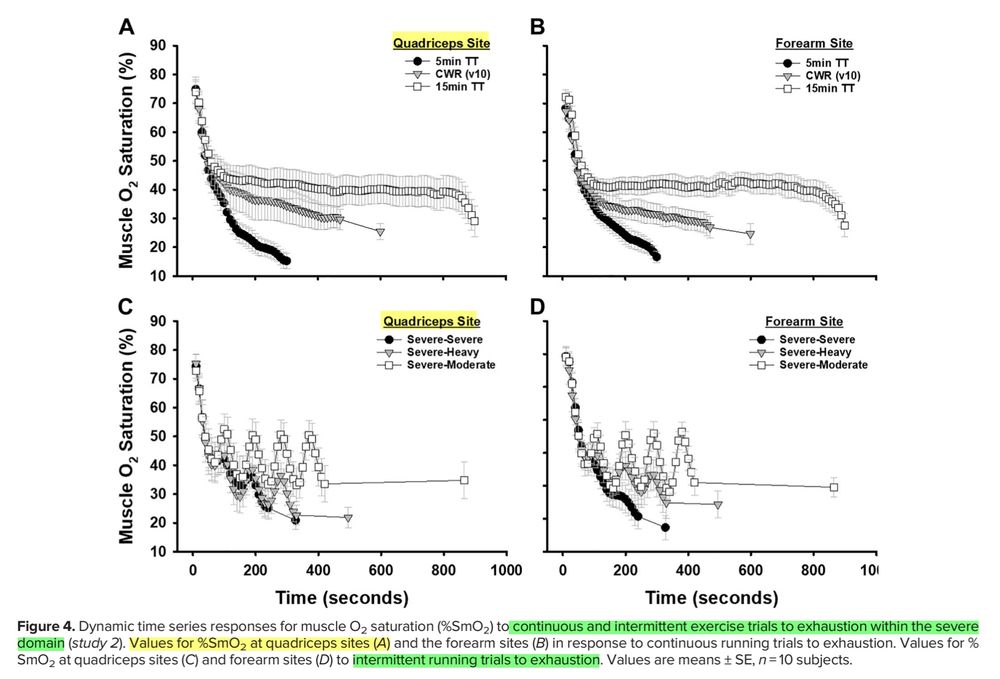
Kirby et al 2021. The balance of muscle oxygen supply and demand reveals critical metabolic rate and predicts time to exhaustion journals.physiology.org/doi/full/10....
26.06.2025 18:00 — 👍 1 🔁 0 💬 1 📌 0
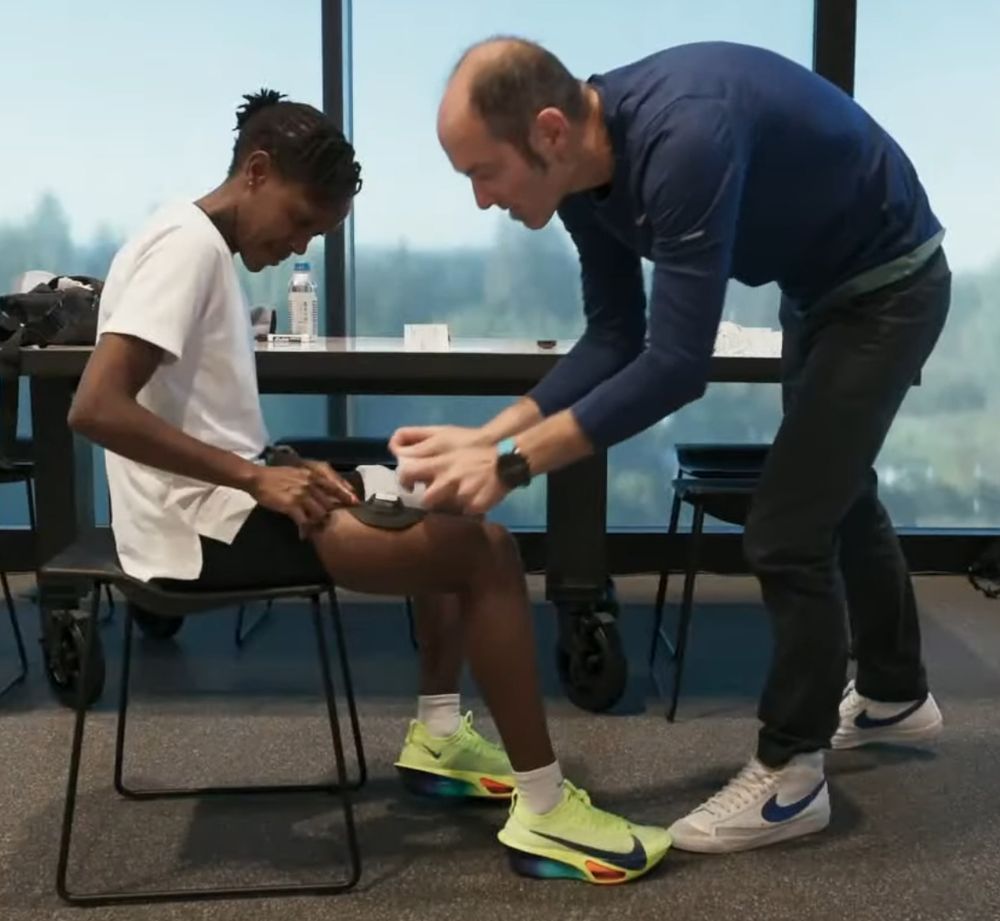
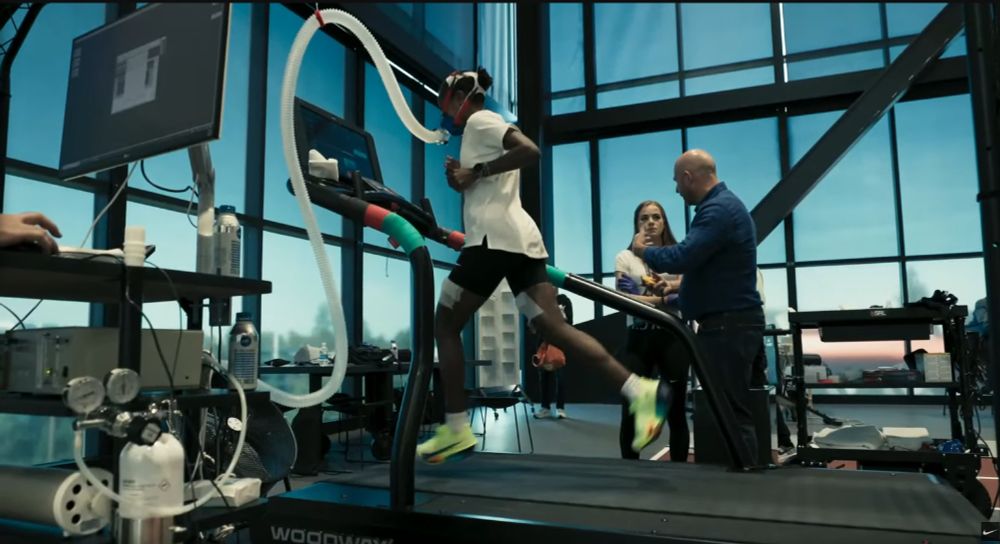
Faith Kipyegon & Dr. Brett Kirby using MoxyMonitor #muscleoxygenation #NIRS during training for her 4-min mile attempt coming up now!
They have published how they might be using this information (see links below 👇)
From their promotional bit a few minutes ago
26.06.2025 18:00 — 👍 4 🔁 0 💬 1 📌 0
I had the opportunity to contribute to Matt de Neef's wonderful article on iliac artery endofibrosis/FLIA in cyclists
Mostly by knowing where to find the great published diagnostic images, and adding some knowledge we've gained from my recent PhD work on screening and conservative management👇
20.06.2025 00:31 — 👍 8 🔁 2 💬 1 📌 0
More on conservative management and return to sport guidelines after surgery
20.06.2025 00:31 — 👍 1 🔁 0 💬 0 📌 0
I had the opportunity to contribute to Matt de Neef's wonderful article on iliac artery endofibrosis/FLIA in cyclists
Mostly by knowing where to find the great published diagnostic images, and adding some knowledge we've gained from my recent PhD work on screening and conservative management👇
20.06.2025 00:31 — 👍 8 🔁 2 💬 1 📌 0
This is a really elegant design/result.
14.06.2025 20:02 — 👍 4 🔁 1 💬 0 📌 0
Thoughts about running? Will propulsion phase be above the critical occlusion tension in locomotor muscles? During sprints? Middle-distance? Marathon??
I'd expect it probably is in gastroc at least, based on how mNIRS deoxygenates during incremental running in many athletes 🤔
07.06.2025 13:43 — 👍 5 🔁 0 💬 0 📌 0
Figure 3D shows total work kJ is basically constant across loads under cuff occlusion, supporting W'bal model
Apart from 80%1RM, in which reps were low enough that a missing fractional last rep would meaningfully reduce total work
@matthewfliss.bsky.social any more thoughts on this?
07.06.2025 13:24 — 👍 0 🔁 0 💬 0 📌 0
Oh good thoughts, thanks Cap. Something like that seems likely given motor unit recruitment with fatigue. Would larger MUs recruited at lower forces lower effective COT during a prolonged task?
07.06.2025 13:20 — 👍 0 🔁 0 💬 0 📌 0
Is COT prior work dependent, W’bal dependent etc ? It can be manipulated by BFR, so I would think W’bal sensitive
07.06.2025 04:28 — 👍 2 🔁 1 💬 2 📌 0
For his PhD, @matthewfliss.bsky.social will be trying to determine whether COT represents an absolute or a relative load, with high frequency mNIRS and intramuscular pressure recording during knee extension bouts
Watch his work! Fascinating stuff 10/
bsky.app/profile/jema...
06.06.2025 14:06 — 👍 1 🔁 0 💬 1 📌 0
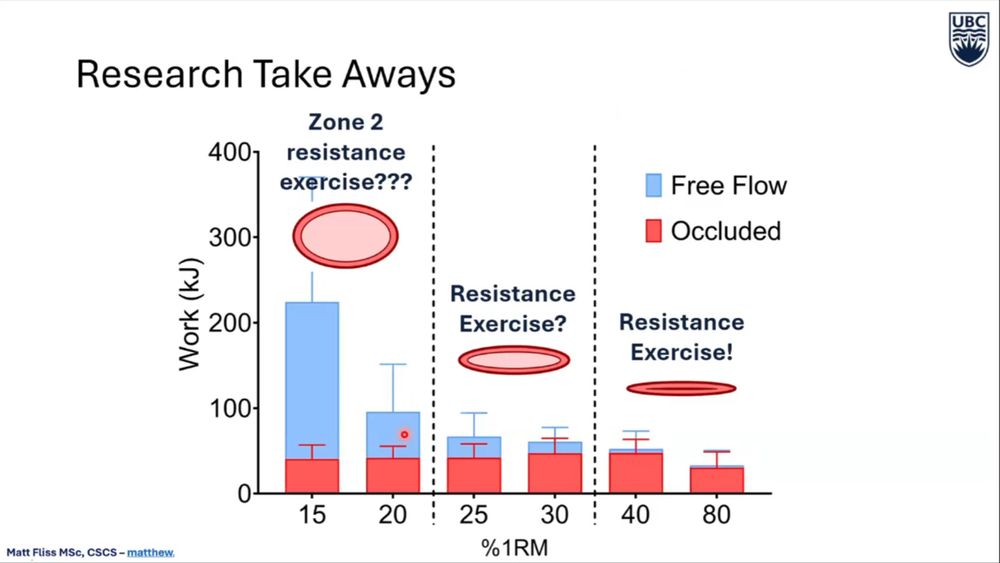
Image from a slide showing total work (kilojoules) performed during knee extension bouts from 15 to 80% one rep maximum (1RM), under free flow and occluded conditions. Suggesting that below 25% 1RM is closer to “endurance” exercise, while resistance exercise is above 40% 1RM, and in between is a hybrid or transition between the two.
Lead author Matt Fliss presented this work from his PhD at the recent 2025 Moxy Summit, which is available free to watch 9/
moxy-academy.teachable.com/courses/moxy...
06.06.2025 14:06 — 👍 2 🔁 0 💬 1 📌 0
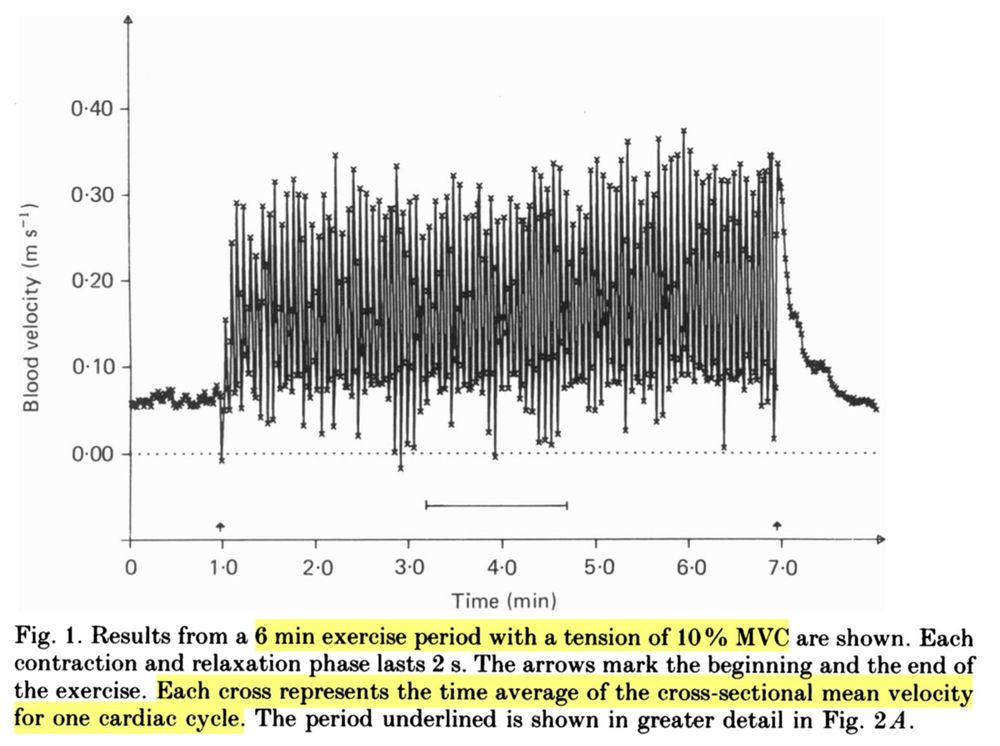
Figure showing femoral blood flow velocity during knee extension at a tension of 10% maximal voluntary contraction (MVC). Blood flow reduces close to zero during contraction phases, and increases during relaxation phases. https://physoc.onlinelibrary.wiley.com/doi/10.1113/jphysiol.1988.sp017332
Even in “pure” endurance sport like cycling, there are momentary intramuscular occlusions during every pedal stroke above a certain power
Pushing on the pedals squeezes blood out of muscle like a sponge. Relaxing the muscle allows blood to flow back in 8/
06.06.2025 14:06 — 👍 5 🔁 0 💬 1 📌 2
The sports data API for developers and data scientists.
https://sweatstack.no
PhD in economics from LISER, Luxembourg, now looking for research software engineer or data science positions. Mostly here to talk about #rstats
https://github.com/etiennebacher
Data, analysis, visualization, #CensusMapper, transportation cyclist.
📍Vancouver, BC
Scientist and software developer. Creator of tidyplots.org. Website jbengler.de.
Assistant professor at Georgia State University, formerly at BYU. 6 kids. Study NGOs, human rights, #PublicPolicy, #Nonprofits, #Dataviz, #CausalInference.
#rstats forever.
andrewheiss.com
Signal: andrewheiss.01
Ecology, evolution, epidemiology, statistics (mixed models). McMaster University, Hamilton, Ontario https://math.mcmaster.ca/bolker
Cycling - Stats | Tour de France #TdF | Giro d'Italia #Giro | Vuelta a Espana #Vuelta
http://www.velostatistics.nl
Summaries of articles to enhance training, health & performance https://www.youtube.com/channel/UC1kkBQ3H2zoQbCZ-Pd-8DDA
The European College of Sport Science (ECSS) is leading the promotion of world-class interdisciplinary sport and exercise science and medicine uniting a global community of researchers and professionals.
http://linktr.ee/ECSS
Asst. Professor of Health Sciences
🏋️🩸 Exercise endocrine physiology
🚴🔦 Near infrared spectroscopy (NIRS)
Professor of Respiratory Medicine and Exercise Physiology at The Lundquist Institute/Harbor-UCLA Medical Center
Researching ways to improve performance, prevent injuries, and accelerate recovery.
Assistant Prof SFU | Director, SFU Run Lab | Sport Physiotherapist | Running Biomechanics | Author of Science of Running | 2:33 marathoner | Dad sfu.ca/run-lab.html

